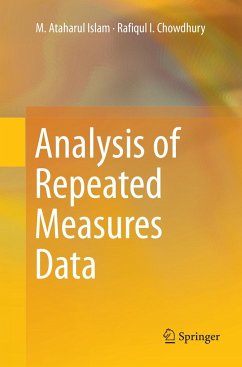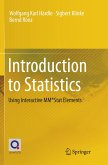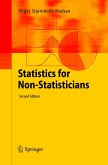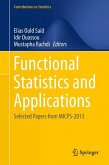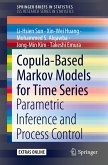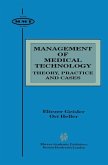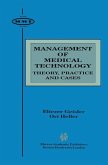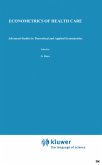This book presents a broad range of statistical techniques to address emerging needs in the field of repeated measures. It also provides a comprehensive overview of extensions of generalized linear models for the bivariate exponential family of distributions, which represent a new development in analysing repeated measures data. The demand for statistical models for correlated outcomes has grown rapidly recently, mainly due to presence of two types of underlying associations: associations between outcomes, and associations between explanatory variables and outcomes.
The book systematically addresses key problems arising in the modelling of repeated measures data, bearing in mind those factors that play a major role in estimating the underlying relationships between covariates and outcome variables for correlated outcome data. In addition, it presents new approaches to addressing current challenges in the field of repeated measures and models based on conditional and joint probabilities. Markov models of first and higher orders are used for conditional models in addition to conditional probabilities as a function of covariates. Similarly, joint models are developed using both marginal-conditional probabilities as well as joint probabilities as a function of covariates.
In addition to generalized linear models for bivariate outcomes, it highlights extended semi-parametric models for continuous failure time data and their applications in order to include models for a broader range of outcome variables that researchers encounter in various fields. The book further discusses the problem of analysing repeated measures data for failure time in the competing risk framework, which is now taking on an increasingly important role in the field of survival analysis, reliability and actuarial science. Details on how to perform the analyses are included in each chapter and supplemented with newly developed R packages and functions along with SAS codes andmacro/IML. It is a valuable resource for researchers, graduate students and other users of statistical techniques for analysing repeated measures data.
The book systematically addresses key problems arising in the modelling of repeated measures data, bearing in mind those factors that play a major role in estimating the underlying relationships between covariates and outcome variables for correlated outcome data. In addition, it presents new approaches to addressing current challenges in the field of repeated measures and models based on conditional and joint probabilities. Markov models of first and higher orders are used for conditional models in addition to conditional probabilities as a function of covariates. Similarly, joint models are developed using both marginal-conditional probabilities as well as joint probabilities as a function of covariates.
In addition to generalized linear models for bivariate outcomes, it highlights extended semi-parametric models for continuous failure time data and their applications in order to include models for a broader range of outcome variables that researchers encounter in various fields. The book further discusses the problem of analysing repeated measures data for failure time in the competing risk framework, which is now taking on an increasingly important role in the field of survival analysis, reliability and actuarial science. Details on how to perform the analyses are included in each chapter and supplemented with newly developed R packages and functions along with SAS codes andmacro/IML. It is a valuable resource for researchers, graduate students and other users of statistical techniques for analysing repeated measures data.

